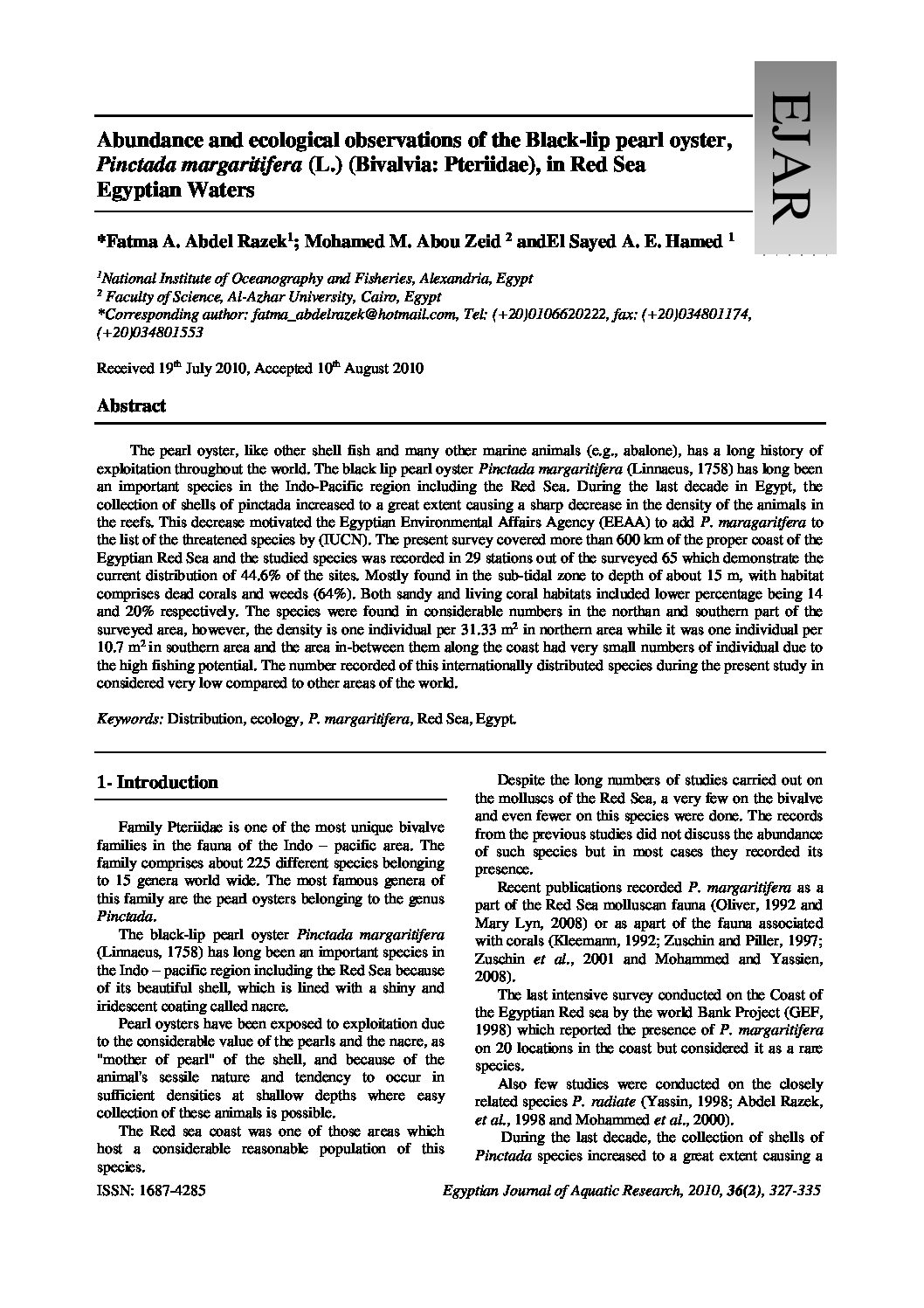Categories
vol-36Improving Androgenesis by optimizing conditions of ultraviolet
treatment in Nile tilapia, Oreochromis niloticus (L.)
Zaki Sharawy1 & 2
1 National institute of Oceanography and Fisheries, P. O. Box 182, Suez, Egypt
2 Institute for Hydrobiology and Fisheries Science, Hamburg University, Olbersweg 24,
D-22767 Hamburg, Germany
E-mail: [email protected]
Received 8th March 2010, Accepted 20th October 2010
Abstract
The objectives of the present study were to produce homozygous male in Nile tilapia (Oreochromis. niloticus),
where the male is heterogametic, by using UV-irradiation and heat shock treatments. Nile tilapia, O. niloticus brood
stock was collected from the Lake Manzala population, Egypt and send to the Institute for Animal Breeding and
Genetics, Goettingen, Germany, where this experiment was carried out. Fertilization of ultraviolet (UV) irradiated
eggs was carried out by using a dosage of 254 nm at a fixed intensity of 58 mJ/cm2
for different distances between
UV-lamp and eggs via a heat-shock (41°C for 5 min started at 4.5 min post-fertilization) of Nile tilapia, O. niloticus
with sperm from homozygous O. niloticus males induced by mitotic gynogenesis from the second and the third
generations of low and high temperature sensitive selection induced. Treatment of eggs at 5 cm distance before
fertilization proved to be sufficient to inactivate egg DNA. The present results showed that for the values of a sex
ratio of gynogenetic males was mated with normal females (one male x one female) for control group with a lowest
percentage of males (14%) and the highest percentage was 44%. For the experimental treatment groups, the results
obtained that, at hatching stage (4 days post-fertilization), survival ranged from 0.57% to 3.50%. Although high
survival rates were obtained at the hatching stage, they sharply decreased by the yolk-sac absorption stage and
dropped by the swim-up stage (30-150 day post-fertilization). Sex ratio of all the progeny (treated groups)
significantly differed from 1:1 while their respective controls did not significantly differ from the expected 1:1 ratio
(P>0.05), with exception of one male which produced 14% male progeny. After testing the homozygous of fishes,
they will be used to produce subsequent generation of androgenetic strains. This study may indicate successfully
inactivated the maternal genome (nuclear DNA) in Nile tilapia eggs at 5 cm distance using UV-irradiation.
Keywords: Oreochromis niloticus, monosex, sex ratio, androgenesis, haploidy, diploidy







